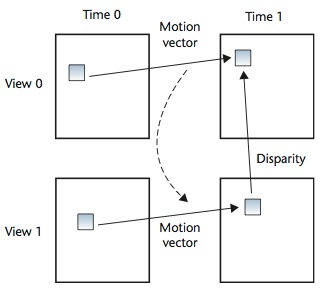TR2014-016
Next-Generation 3D Formats with Depth Map Support
-
- , "Next-Generation 3D Formats with Depth Map Support", IEEE Multimedia, DOI: 10.1109/MMUL.2014.31, Vol. 21, No. 2, pp. 90-94, May 2014.BibTeX TR2014-016 PDF
- @article{Chen2014apr,
- author = {Chen, Y. and Vetro, A.},
- title = {{Next-Generation 3D Formats with Depth Map Support}},
- journal = {IEEE Multimedia},
- year = 2014,
- volume = 21,
- number = 2,
- pages = {90--94},
- month = may,
- organization = {IEEE Computer Society},
- publisher = {IEEE},
- doi = {10.1109/MMUL.2014.31},
- issn = {1070-986X},
- url = {https://www.merl.com/publications/TR2014-016}
- }
- , "Next-Generation 3D Formats with Depth Map Support", IEEE Multimedia, DOI: 10.1109/MMUL.2014.31, Vol. 21, No. 2, pp. 90-94, May 2014.
-
MERL Contact:
-
Research Area:
Digital Video

Abstract:
This article reviews the most recent extensions to the Advanced Video Coding (AVC) and High Efficiency Video Coding (HEVC) coding standards, which integrate depth video to support advanced multiview and 3D video functionalities. All the extensions provide single-view compatibility, while some extensions add depth support on top of conforming stereoscopic bitstreams. To achieve the highest gains in coding efficiency, depth information is utilized in coding the texture views. The compression formats described in this article can be used to support emerging auto-stereoscopic displays and free-viewpoint video functionalities.
